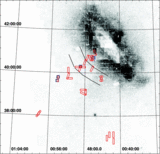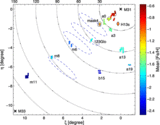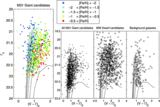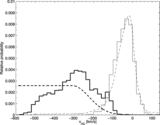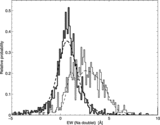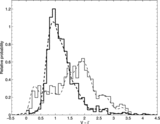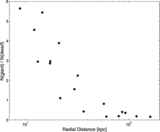Image Details
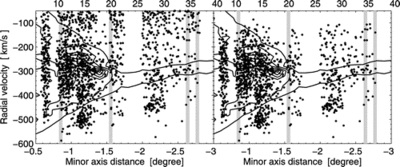
Caption: Fig. 12.
Top: Radial velocities as a function of radial distance along the minor axis. Shown left is the complete spectroscopic sample, without the removal of foreground dwarfs, within the inner 40 kpc, while the data shown in the right panel have been cleared of the foreground contamination using the methods described in § 4. Indicated as gray shaded bars are the HST fields of Brown et al. (2003, 2006, 2007). The black contours delineate the distribution from our simulations (see Fig. 11, bottom). Numbers at the top indicate distances in kpc to guide the eye. Bottom left: Radial variation of mean radial velocity for minor‐axis (filled circles) and off‐axis (open squares) fields. Small symbols at ﹩v_{\mathrm{HC}\,}\sim -50﹩ km s−1 are for the dwarf stars, while the larger symbols below −180 km s−1 show the giant distributions. Comparison with the dotted lines at the systemic velocities of M31 (−300 km s−1) and M33 (−180 km s−1) suggests that the giant samples in the outermost two fields appear to be suffering from contamination by M33 members (see also Fig. 19). Bottom right: Distribution of velocites for the full, dwarf‐cleaned sample. The Stream fields (a3 and H13s) reflect in the peaks below −400 km s−1 and the peak at −520 km s−1, both of which are reproduced by the simple orbit model of Ibata et al. (2004).
Copyright and Terms & Conditions
© 2008. The American Astronomical Society. All rights reserved. Printed in U.S.A.


